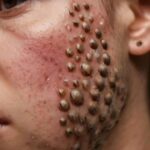Brad Pitt and the Enigma of Prosopagnosia: Unmasking ‘Facial Blindness’
Hollywood superstar Brad Pitt recently revealed his struggle with prosopagnosia, a neurological disorder widely known as ‘facial blindness.’
This article delves into the intricacies of the condition, its symptoms, causes, and potential treatments, as explained by behavioral neurologist Borna Bonakdarpour and other experts.
Unraveling Prosopagnosia: An Overview
Characterized by an inability to recognize faces, prosopagnosia stands apart from color blindness or typical visual impairments. As per the National Institute of Neurological Disorders and Stroke, this disorder isn’t associated with intellectual challenges, memory loss, or visual issues.
Dani Blum, a renowned journalist, explains, “Prosopagnosia is distinct from occasional forgetfulness or difficulty with names.”
Prosopagnosia’s Impact: From Mild to Severe
Prosopagnosia’s severity fluctuates among individuals. For some, recognizing a close friend’s face can be tough, while others might struggle to identify their own reflection. Interestingly, certain individuals might fail to distinguish faces from objects.
It’s worth noting that prosopagnosia may lead to persistent anxiety or depression due to the sense of isolation and fear accompanying the disorder. People with prosopagnosia often avoid social interactions, fearing their inability to recognize and connect with others.
Highlighting this, Brad Pitt shared in a recent interview, “For years, I’ve had trouble recognizing faces, although I’ve never been formally diagnosed with prosopagnosia.” In 2013, Pitt acknowledged distancing himself due to his difficulty in recognizing faces, often preferring to stay home.
The Origin of Prosopagnosia: Genetic or Acquired?
The roots of prosopagnosia can be traced back to either genetic predisposition or an acquired condition. It’s estimated that nearly 2% of individuals may grapple with this disorder at some point in their lives, indicating a potential genetic factor. According to Blum, “Congenital or lifelong prosopagnosia seems to be less common.”
Interestingly, children born with prosopagnosia exhibit no apparent structural brain abnormalities, as per Andrey Stojic, director of general neurology at the Cleveland Clinic. The exact cause of the condition in such cases remains a mystery.
However, prosopagnosia can also surface later in life, potentially linked to brain abnormalities resulting from trauma or head injury. Bonakdarpour mentions that strokes and Alzheimer’s disease can also lead to this condition.
Navigating Prosopagnosia: Any Available Treatments?
Unfortunately, no cure exists for prosopagnosia at present. Yet, individuals with the condition often devise strategies to recognize people by focusing on distinctive physical attributes like voice, hair color, or gait.
Diagnosing prosopagnosia typically involves a series of tests to evaluate an individual’s memory and facial recognition abilities. As Blum explains, “Confirmation of facial blindness often involves a lengthy process, as doctors must ensure it’s not indicative of a more severe degenerative neurological condition.”
It’s crucial to understand that many, like Pitt, may not receive a formal diagnosis despite experiencing the condition. As Stojic observes, “The challenges he [Pitt] describes are common among people with prosopagnosia. While some find it debilitating, others struggle to comprehend its implications.”
As a parting quote from Pitt summarizes his struggle: “That’s why I remain at home.” This simple statement underscores the pervasive impact of prosopagnosia on individuals’ lives, reinforcing the need for increased understanding and awareness about the condition.










